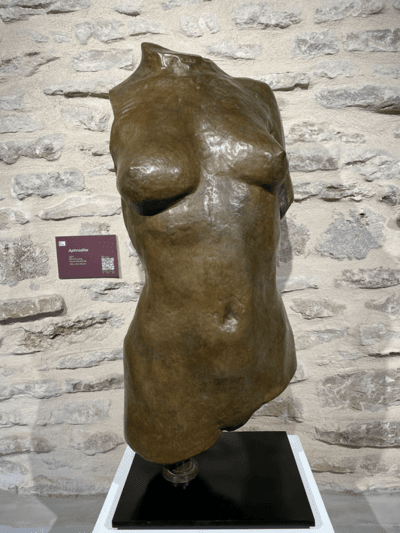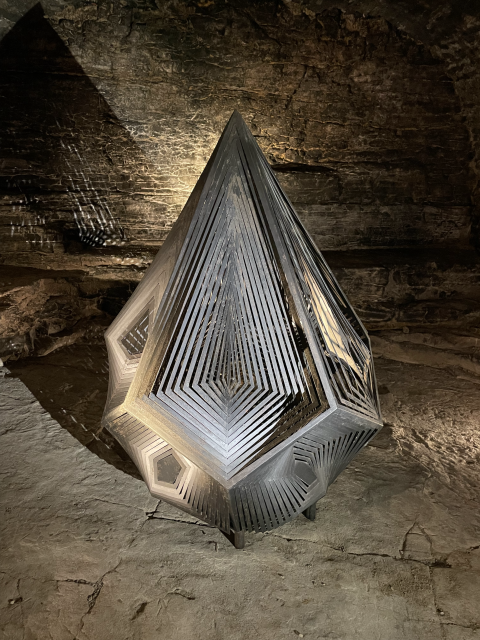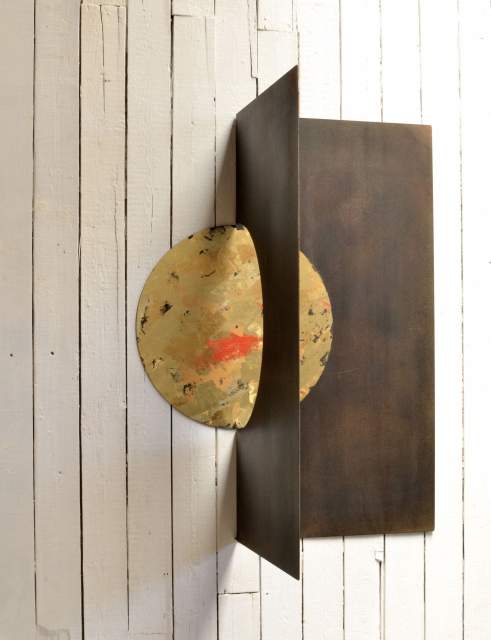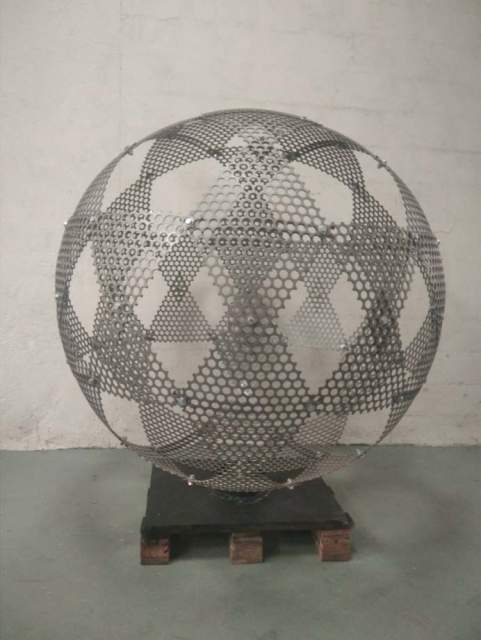Art at the Castle
To offer its guests a truly sensory experience, La Maison Prosper Maufoux wanted each visit to be both a gustatory adventure and a visual exploration.
How do we do this? By becoming an ambassador for works of art.
Whether you're a visitor or a resident, the journey won't be quite the same.
ART IN SITU
Time for a tasting in our cellars
During a tasting in our cellars, stroll along an underground passageway dotted with contrasting worlds where the past meets the present, and where, for the duration of a revolution, ancestral stones become the setting for unusual contemporary works.
As well as enjoying an exceptional view of the vineyards, a gastronomic interlude in our restaurant Prosper also allows you to admire a monumental work of art exhibited in the garden.
A unique experience made possible by Art in situ.
Orchestrated by the association La Route des arts, Art in situ brings together contemporary art and Burgundy's terroir. The concept invites visitors to discover the works of several contemporary artists on the premises of partner wineries. The route, which runs along the Route des Grands Crus, features a dozen or so stops focusing on art and wine.
COLLECTION ON DISPLAY
A stay in one of our guest rooms
During a stay in one of the château's four luxury rooms, stroll from room to room, through 300 years of history and, in an intimate atmosphere, contemplate paintings and sculptures by famous 20th-century artists (Miró, Botero, Picasso). Change your artistic universe as you wander through the gardens and cellars of the château, encountering modern creations scattered here and there.

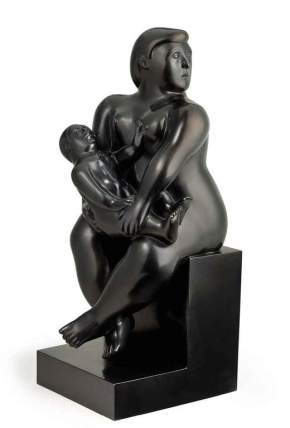
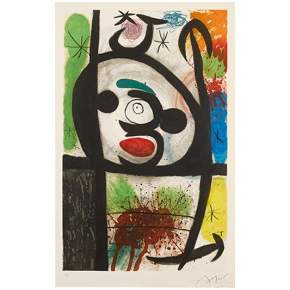
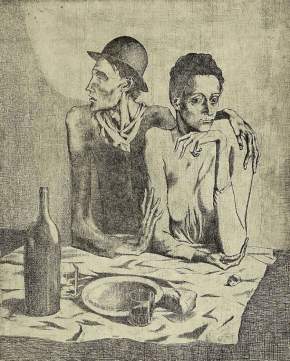
Discover the artists
ARTIST
Fernando Botero
Joan Miró, born in Barcelona on 20 April 1893 and died in Palma de Mallorca on
Majorca on 25 December 1983, was a Catalan painter, sculptor, engraver
and ceramist. Defining himself above all as an « international
international », he was one of the main representatives of the
surrealist movement.
Botero drew much of his inspiration from famous European painters to create works such as «Mona Lisa» and «Infanta Margarita», but with his own distinctive style. However, he works very little with models. He explains that this limits his artistic freedom and inhibits his imagination. Fernando Botero therefore developed a distinct style, characterised by the roundness of his figures. It was with the creation of his painting «Still Life with Mandolin» that he achieved real success. Despite their appearance, his figures generally reveal no emotion, expressing a detached impartiality. Even when painting powerful personalities, Botero maintains this attitude. His figures exude an impression of lightness, suppleness and grace, despite their corpulence. So why are his figures fat? Botero does not describe them as such, but rather as «having volume»; a magical, sensual quality that he seeks in his art, in contrast to the tendency of contemporary painting to neglect volume.
 MATERNITY, 2003
MATERNITY, 2003370 000 €
Between 1963 and 1964 Fernando Botero also explored sculptural art. He began by using acrylic resin and sawdust. He soon abandoned this material because it was too porous and did not suit his realistic style. In 1973, he tried again, this time using bronze. He saw this material as a natural extension of his pictorial work. His sculptures depict voluptuous figures and are inspired by the art of ancient Egypt, ancient American cultures and certain cults. His large-scale sculptures have been exhibited worldwide, and in 2007 seven of his bronze statues were stolen from a foundry in Italy.
Discover two works by Fernando Botero at Château de Saint-Aubin :
• Maternity, 2003
• Acrobats, 2007
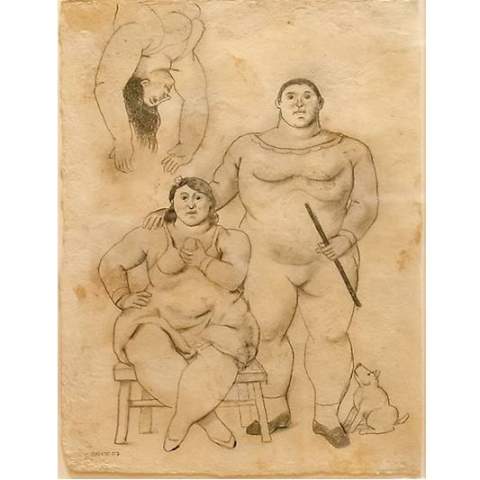 Acrobats, 2007
Acrobats, 200757 000 €
ARTIST
Joan Miró
Joan Miró, born in Barcelona on 20 April 1893 and died in Palma de Mallorca on
Majorca on 25 December 1983, was a Catalan painter, sculptor, engraver
and ceramist. Defining himself above all as an « international
international », he was one of the main representatives of the
surrealist movement.
Very interested in art from an early age, Miró trained at a free academy where he aspired to paint in a colourful way. Miró developed his own artistic language, mixing abstraction and figuration, while creating dreamlike works populated with symbols such as women, birds, stars and comets. Blue was his emblematic colour, representing the sky and the sea. He wanted to be free. However, the artist insists on a certain violence associated with his desire to break away from classical codes, which he claims he wanted to «kill». This very strong word indicates that this path to liberation is the fruit of an intense personal struggle. His work has been widely recognised, particularly in the United States, where he received a retrospective at the Museum of Modern Art in 1941. In the 1960s, he contributed to the Maeght Foundation and created monumental works, while continuing to take part in major projects in Europe and the United States. The Joan Miró Foundation in Barcelona, established in 1975, bears witness to the artist's renowned status and singular artistic legacy.
 La Femme Toupie, 1974
La Femme Toupie, 197471 000 €
Joan Miró, although associated with Surrealism, created a unique and indecipherable artistic style. He developed his own vocabulary, symbols and writing, calling himself the «genius of the bizarre». Miró explored various styles, from classical to bizarre, from figurative to total deconstruction. His colour palettes, including yellow, red, green and blue, were inspired by his regular stays on the island of Majorca, creating a distinct and recognisable range of tones in his works.
Discover nine works by Joan Miró at Château de Saint-Aubin :
• El Merma, 1978
• Fugitive, 1978
• Chef d’Orchestre, 1976
• Le Lézard aux Plumes d’Or, 1967
• Espiru, 1975
• Croc a Phynances 4, 1971
• La Femme Toupie, 1974
• Les Perseides, 1970
• Gaudi II, 1979
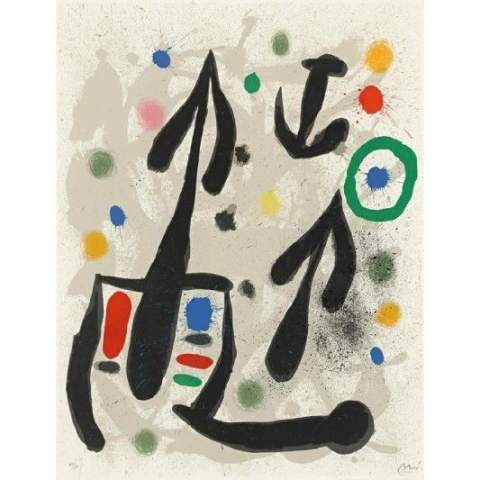 Les Perseides, 1970
Les Perseides, 197012 400 €
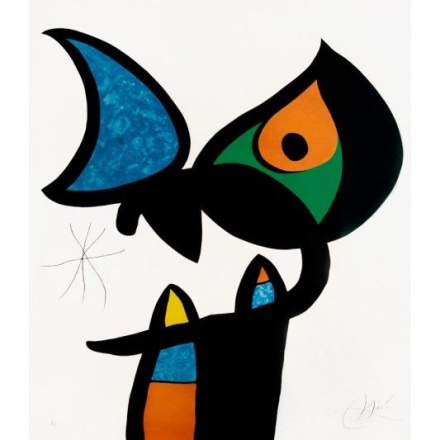
26 800 €
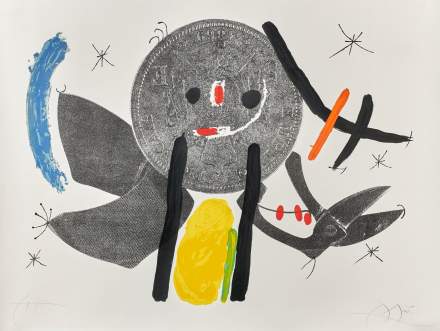
16 800 €
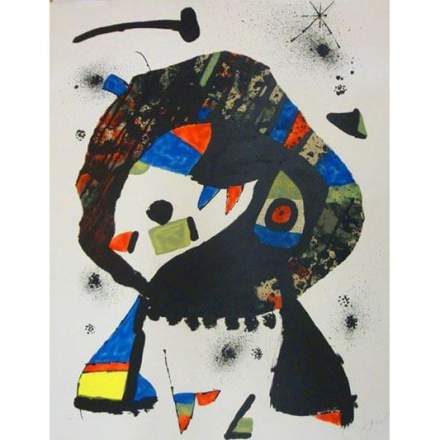
14 200 €
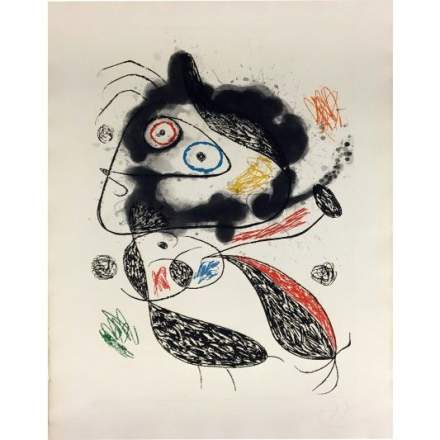
16 800 €

25 500 €
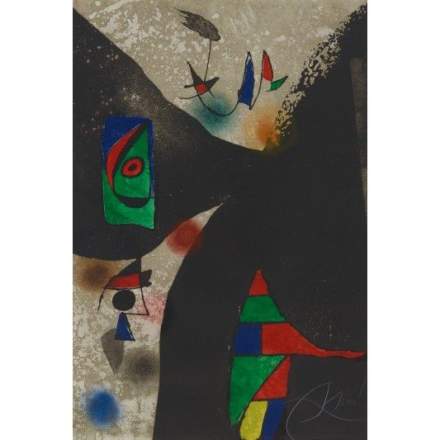
16 500 €
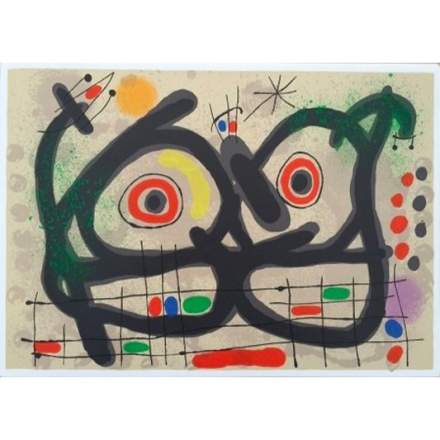
7 700 €
ARTIST
Pablo Ruiz Picasso
Pablo Ruiz Picasso was born on 25 October 1881 in Malaga (Spain) and died on
died on 8 April 1973 in Mougins (Alpes-Maritimes, France).
Spanish painter, draughtsman, sculptor and engraver who
most of his life in France.
From an early age, he showed an exceptional talent for drawing and painting. By the age of 13, he was already producing works of great skill. Pablo Picasso moved first to Barcelona to study art and then to Paris, which at the time was the centre of artistic effervescence in the early 20th century. In Paris, Picasso was influenced by the artistic movements of the time, such as post-impressionism, fauvism and cubism. It was with Georges Braque that he developed the Cubist movement, which revolutionised art by fragmenting forms and presenting multiple perspectives in a single work. Over the course of his career, Picasso experimented with a variety of artistic styles, ranging from realism to abstraction. His most famous works include «‘Les Demoiselles d'Avignon» (1907), a bold cubist painting, and «Guernica» (1937), a deeply emotional painting depicting the horrors of the Spanish Civil War. Picasso was a prolific artist, creating thousands of works throughout his life. He has worked in a variety of arts, including painting, sculpture, ceramics and engraving. He also explored themes such as the human figure, sexuality and suffering, which became recurring elements in his work. At the time of his death, Pablo Picasso left behind an immense artistic legacy, having influenced generations of artists. He is widely regarded as one of the most important and innovative artists in the history of modern and contemporary art.
Discover a work by Pablo Ruiz Picasso at Château de Saint-Aubin :
• Le Repas Frugal, 1904
 Le Repas Frugal, 1904
Le Repas Frugal, 1904182 000 €



